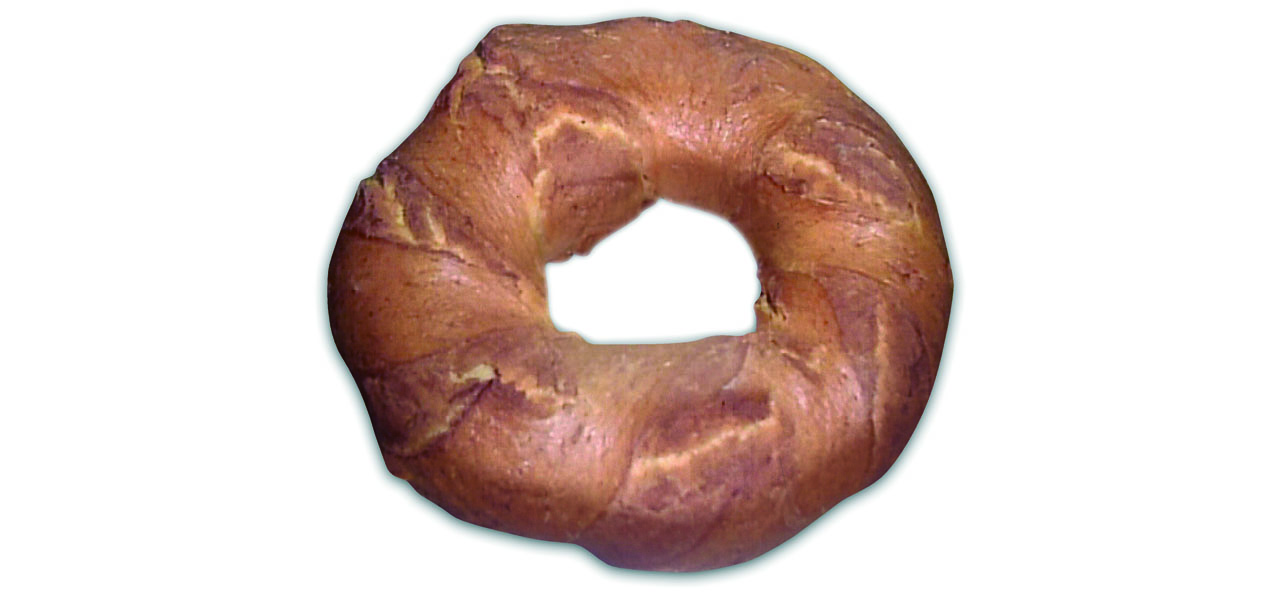Prodotti tradizionali
tarallo cu ll'ove

Nell'Avellinese, a San Martino Valle Caudina, in occasione della Pasqua si prepara un delizioso tarallo che prende il nome dal paese o è detto "tarall' cu ll'ove". L'uovo è, infatti, uno dei suoi principali ingredienti: se ne impastano una decina circa insieme alla farina di grano tenero alla sugna e allo zucchero e si aromatizza l'impasto con bucce di agrumi, vaniglia e citrato di sodio sciolto nel latte. Dopo aver poggiato tutto sull'apposito tavolo di legno per la pasta, si lavorano delle ciambelle di circa 18 cm. di diametro successivamente bollite in acqua per un paio di minuti e, infine, infornate per circa 40 minuti. La preparazione del tarallo a San Martino era un vero e proprio rito sociale poiché più famiglie, nel periodo pasquale, si riunivano e utilizzavano lo stesso forno a legna per cuocere i loro taralli, da portare nella "mappata" il canestro contenente i viveri della scampagnata del lunedì di Pasquetta, come illustra il documentario "La mia Madre Terra", del 1975. Oltre a essere consumati caldi e croccanti, infatti questi taralli sono ottimi dopo qualche giorno bagnati nel vino bianco. La tradizione lega il tarallo di San Martino Valle Caudina anche alle feste di Sant'Antonio da Padova e dei Santi Palerio ed Equizio Martire, che cadono in giungo: era, difatti, offerto ai banditori che giravano per il paese a raccogliere offerte per l'asta pubblica che si teneva dopo la processione. La ricetta del tarallo è stata tramandata oralmente, pressoché invariata e oggi è preservata dalla pubblicazione in numerosi libri di cucina tradizionale oltre che dai ricettari delle antiche famiglie della zona.
In the Avellino zone, in San Martino Valle Caudina, a delicious tarallo is prepared on the occasion of Easter. It is named after the town, but it can be called also "tarall' cu ll'ove". The egg is, in fact, one of its principal ingredients: about 10 eggs are worked with soft wheat flour, lard and sugar and the mixture is flavoured with peels of citrus fruits, vanilla and sodium citrate melted in milk. After putting everything on the wooden table for the pasta, ring-shaped cakes of about 18 cm in diameter are prepared and boiled in water for a couple of minutes. At last they are baked for approximately 40 minutes. As illustrated by the documentary "My Mother Earth" of 1975, the preparation of the tarallo in San Martino was a real social rite because in the Eastern period, many families got together and used the same wood-fired oven to cook their taralli, that were then put into the "mappata" - a basket containing food for a trip in the country on Easter Monday. These taralli can be eaten warm and crispy, but they are excellent also after some days soaked in white wine. The tradition binds the tarallo of San Martino Valle Caudina also to the festivals of Sant'Antonio from Padova and the Saints Palerio and Equizio Martyr, that are in June: it was offered to auctioneers that went around the city to raise offers for a public auction that was held after the procession. The tarallo recipe was passed verbally almost unvaried and nowadays, it is protected against publication in numerous traditional cookbooks as well as against recipe books of local families.